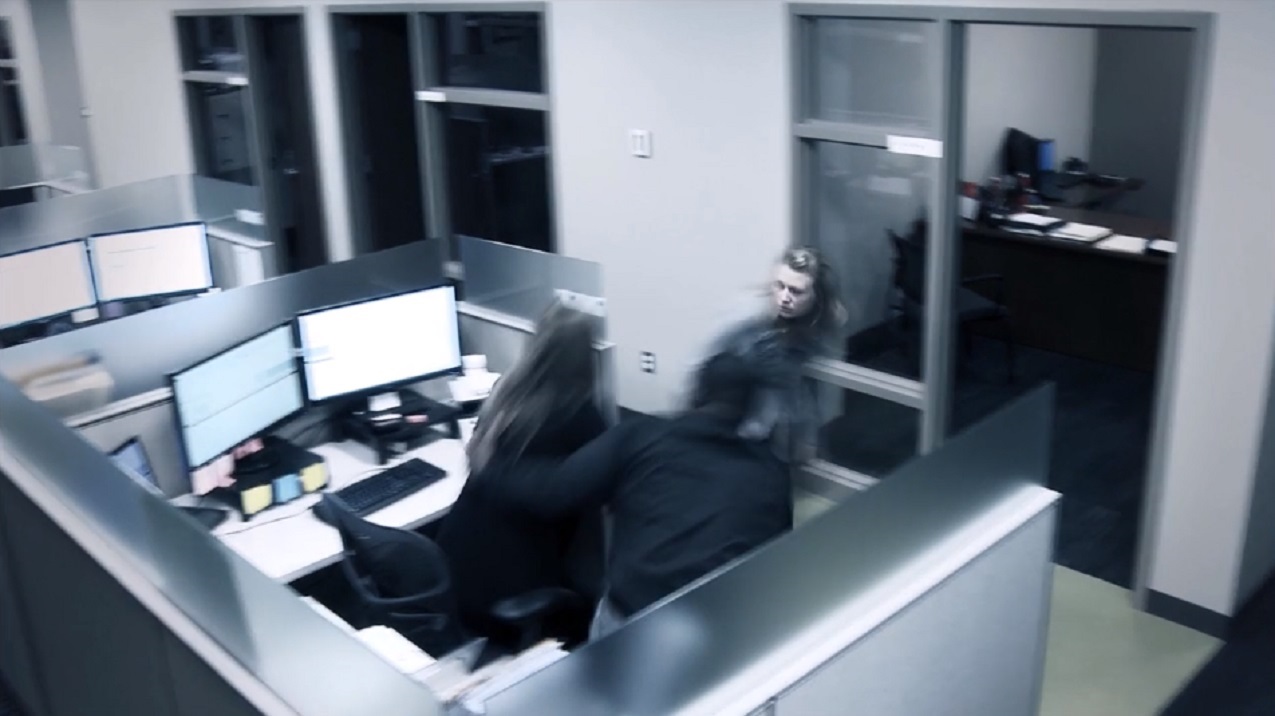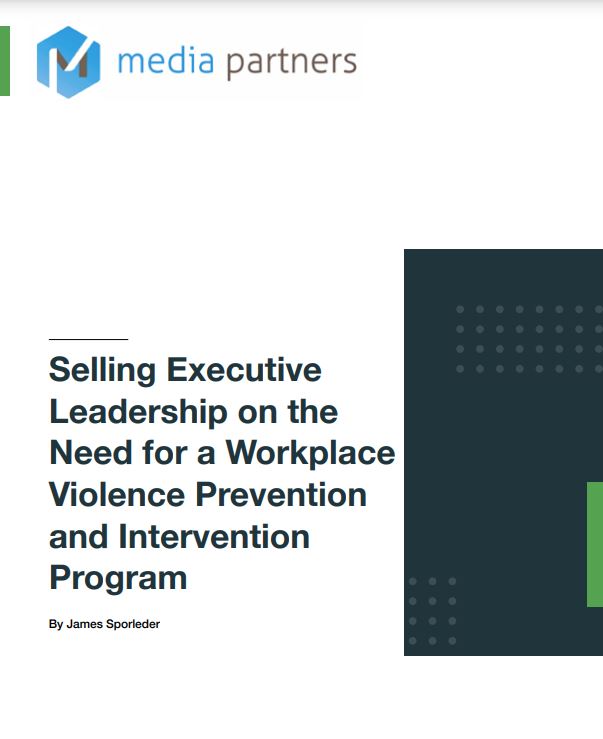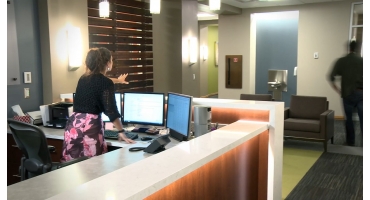Mass Shootings: Is There Anything We Can Do?

ALREADY A ROUGH YEAR
It’s been a rough year already in terms of violence in our workplaces, schools, and society in general. As of this writing, there have been 157 mass shootings according to the Gun Violence Archive, which defines a mass shooting as four or more people being shot or killed in an incident, not including the shooter. And it’s news like this that can drive many to a place of feeling particularly vulnerable and even helpless. But, in the midst of the tragedy, senseless loss, and the associated grief, I’d like to offer a message of personal hope.
The subject of interpersonal violence is always hard and oftentimes scary to think about, but it isn’t something with which we’re unfamiliar. As Gavin DeBecker asserts in his book, The Gift of Fear, “there is a universal code of violence.” The fact is, we all have an innate ability to know when we’re in the presence of danger. Now, it may be strange to think of fear as “a gift,” but inherent in that unexpected phrase is the idea that our implicit awareness of danger means we also have the ability to do something about it; that, in many situations, we CAN recognize and survive acts of Extreme Violence.
But as with most things in life, this ability to survive is only optimized if we make an effort to leverage our innate capacities into functional strengths through education and training. This doesn’t have to be some long and complicated process, and it doesn’t have to be scary and overwhelming. But it does require us to face our reservations and fears with intentionality while realizing that, behind the fear, we always have options… life saving options even in the midst of life-threatening circumstances.
When I was a new special survival training instructor in the U.S. military, one of my mentors pulled me aside and said, “Jim, the will to survive can be taught and nurtured... and that’s what we do here.” I’ve never forgotten the power of those words and I offer them to you now.
A CALL TO ACTION
The fact is, we can all develop and strengthen our will to survive, but there’s a significant barrier in the way before we can do so, and that’s our own sense of denial. Denial is, in many ways, a yielding to the inertia of our own “normalcy bias,” which can often sound like “...that doesn’t happen here,” or “that won’t happen here, or, at least, won’t happen to me.” And if anything good can come out of the recent spate of violence that has stunned and grieved us all, perhaps it will be that, once again, we’ve been shocked into a begrudging acceptance that extreme violence can happen anywhere, at any time, and to anyone. As we learned from 9-1-1, the Virginia Tech Tragedy, and other events that punctured our collective sense of invulnerability, we must all be careful not to confuse the unfamiliar with the impossible.
And I want to add here that I'm actually encouraged about how people are stepping up to the challenge we're all facing. Having taught active shooter survival courses across the country, I’ve seen that, by and large, people are willing to do what’s difficult; they’re willing to face their fears and hesitancy, especially when the training is respectful and done in a way that informs learners without overwhelming them.
A state trooper with 25+ years’ experience once said to me, “as a first responder, I want to be on scene as soon as the violence breaks out. But the reality is that, for those swept into violent situations, when seconds count for them, unfortunately, I’ll still be minutes away.”
It’s a chilling thought, but it’s also a call to action… a call for all of us to take more personal responsibility for our own immediate safety and security. And I’m seeing more and more of that. It’s almost as if people are saying to themselves, “I’m sick and tired of being afraid of being afraid.” And that’s a good thing. We can do this!
THE BENEFITS OF EDUCATION AND TRAINING
Once we’ve made a commitment to our own personal safety and security, we’ve started a journey that begins to pay dividends in other ways that might not be immediately intuitive.
1. We realize that it’s possible to be mindful, but not fearful. This means we’re being more situationally aware, which is really nothing more than accepting the possibility that bad things can happen and then asking yourself “what would I do if…?” This brief mental rehearsal conducted in any new situational context, like sitting down in a restaurant and noting where the emergency exits are located, can provide you with life-saving options should extreme danger emerge.
2. When we actually engage in some form of awareness and response training, it nurtures our survival mindset and develops a sense of what psychologists call “learned optimism.” Research shows that people trained in survival persist longer in the face of adversity and have an increased ability to help others in a crisis. Additionally, they’re less likely to take risky, self-preserving actions that don’t account for their fellow survivors. This, in turn, helps protect peoples’ sense of dignity and honor, which can greatly improve their post-incident recovery (see my related post, How Moral Choices Can Impact Crisis Recovery).
ANECDOTE
A good friend of mine was the Deputy Chief of Police for a local, mid-sized university.
In the wake of the Virginia Tech tragedy of 2007, Gary was an early adopter and strong advocate of training university students in active shooter awareness and response. He would often say to me, “Do ya know where students go if they’re untrained and they find themselves inside an active shooter event? Why, they go to MSU… Make Stuff Up University! And we just can’t have that!”
TRAINED EMPLOYEES
People know what to do, when to do it, and how to do it.
- Planned responses and proactive actions taken on behalf of self and others
- Mental Permission to take action: either "Run, Hide, Fight" or "Get Out, Get Safe, Get Tough"
- Survival mindset and learned optimism instilled
UNTRAINED EMPLOYEES
Having NO plan leads to the wrong plan.
- Independent, impulsive actions....dangerous to self and others
- Risky self-protection measures often less effective than team approach
- Panic, sense of helplessness can overwhelm and paralyze
3. We form a collective Survival Mindset. When an organization commits to training everyone on how to recognize and respond to an act of extreme violence, there evolves a common awareness and strength within the organizational culture. It’s a common plan of action and combined commitment to one another that collectively bonds them as a team in the face of adversity. The training also helps people understand that interpersonal violence typically follows a behavioral progression with signs and indicators that, when addressed early, can avert tragedy.
In effect, an organization committed to extreme violence awareness and response training nurtures a cultural force where there emerges a thousand eyes alert to developing patterns of concern; a thousand ears listening for signs of personal struggle and pain; a thousand minds discerning spirit and intent; a thousand hands and feet to help those in need; and a thousand hearts to nurture and support one another. And this kind of training also serves to powerfully augment other programs meant to nurture and maintain civil, respectful, and safe work environments.
WHAT CAN BE DONE?
So, what can we do individually in the face of reckless violence and senseless brutality? Thankfully, the answer is not complicated. Most people really just need confirmation that what they sense they should do is, in fact, the right thing to do. It’s having the “mental permission” to trust your intuition and take purposeful action. So let’s review the fundamentals.
|
GET REAL |
|
GET CLEAR |
|
GET OUT If you can’t GET OUT then... |
|
GET SAFE If all else fails and you must confront your attacker, then… |
|
GET TOUGH AND… when it’s safe to do so… |
|
GET HELP |
PUT INSIGHTS INTO ACTION
Don’t let it end here with increased awareness. Talk about this issue with your colleagues and loved ones. Stay alert to your surroundings, but with a mindset of both awareness and empathy. If you see or sense something, SAY something. Remember, this is about being mindful, not fearful.
Life isn’t risk-free, but we don’t have to leave the risk of violence to chance alone. You personally hold the KEY to both effective violence prevention AND YOUR survival. We can do this. There is hope.
Heart and Courage… James
 James Sporleder has more than 25 years' experience in the security industry. With a unique background in specialized captivity survival, James has trained thousands of US military personnel from one of the most elite units in the US Department of Defense. He’s worked in the corporate arena for more than 17 years, focusing on the development and implementation of specialized training programs and helping more than 50 percent of the Fortune 100 prepare for and respond to emerging challenges related to workplace violence, intimate partner violence, and extreme violence such as active shooter.
James Sporleder has more than 25 years' experience in the security industry. With a unique background in specialized captivity survival, James has trained thousands of US military personnel from one of the most elite units in the US Department of Defense. He’s worked in the corporate arena for more than 17 years, focusing on the development and implementation of specialized training programs and helping more than 50 percent of the Fortune 100 prepare for and respond to emerging challenges related to workplace violence, intimate partner violence, and extreme violence such as active shooter.
Selling Executive Leadership on the Need for a Workplace Violence Prevention and Intervention Program eBook
9 Ways Workplace Violence Prevention Training Benefits Individuals and the Organization Infographic







